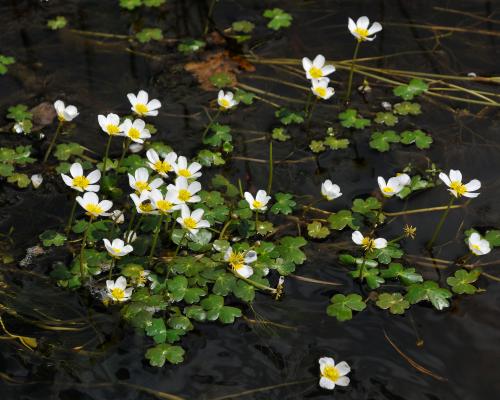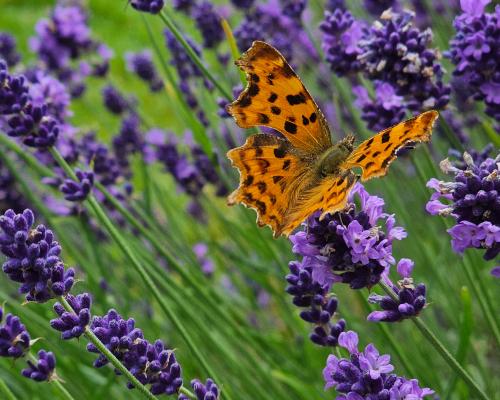
As I lean over the bridge’s parapet, a sudden slap draws my gaze upstream to a dark pool. All that’s left of the trout’s leap are a few bubbles encircled by slowly widening ripples. I look back to where the Six Mile Water river races across stony shallows. Waving languidly in the spate are long, emerald-green scarves of river water crowfoot, Ranunculus fluitans. Water crowfoots are a branch of the buttercup family. However, compared with its landlubber cousins, R. fluitans is another kind of being entirely – one that long ago made a completely different bargain with a changing world.
Most of our several species of water crowfoot have two types of leaf: hair-like ones that are submerged in water; and broad flat ones that float on the surface. The floating leaves betray the group’s terrestrial origins, and species like pond water crowfoot, R. peltatus use them as a raft for their flowers. However, the fast-water specialist R. fluitans has dispensed with floating leaves. Instead, like daisies woven through a girl’s long hair, its blooms emerge from the sinuous underwater leaves directly on to a river’s surface.
Under such conditions, it’s perhaps not surprising that the flowers produce few seeds. Indeed, R. fluitans had to find another way to survive and spread, as it evolved into new riverine habitats at the end of the last ice age. In the turbulent waters of melting glaciers, it found vegetative reproduction – a form of self-propagation whereby stems and leaves can detach to form new plants – to be a more favourable strategy.
The Six Mile Water is the only river in Ireland where R. fluitans is found. The species’ range may have contracted in the 18th and 19th centuries when rivers were harnessed to power the mills. While the species enjoys legal protection, unfortunately the Six Mile Water does not; industrial waste discharge almost wiped out this isolated population of river water crowfoot in 2008.
But for the commitment of the local angler Michael Martin, who manually assisted the survivors to re-propagate, it might have vanished altogether. The population is also threatened by seemingly intractable local agricultural pollution. For how much longer will I be able to admire these bewitching water‑combed tresses and wonder at life’s capacity to respond to a changing world?
• Under the Changing Skies: The Best of the Guardian’s Country Diary, 2018-2024 is published by Guardian Faber; order at guardianbookshop.com and get a 15% discount





